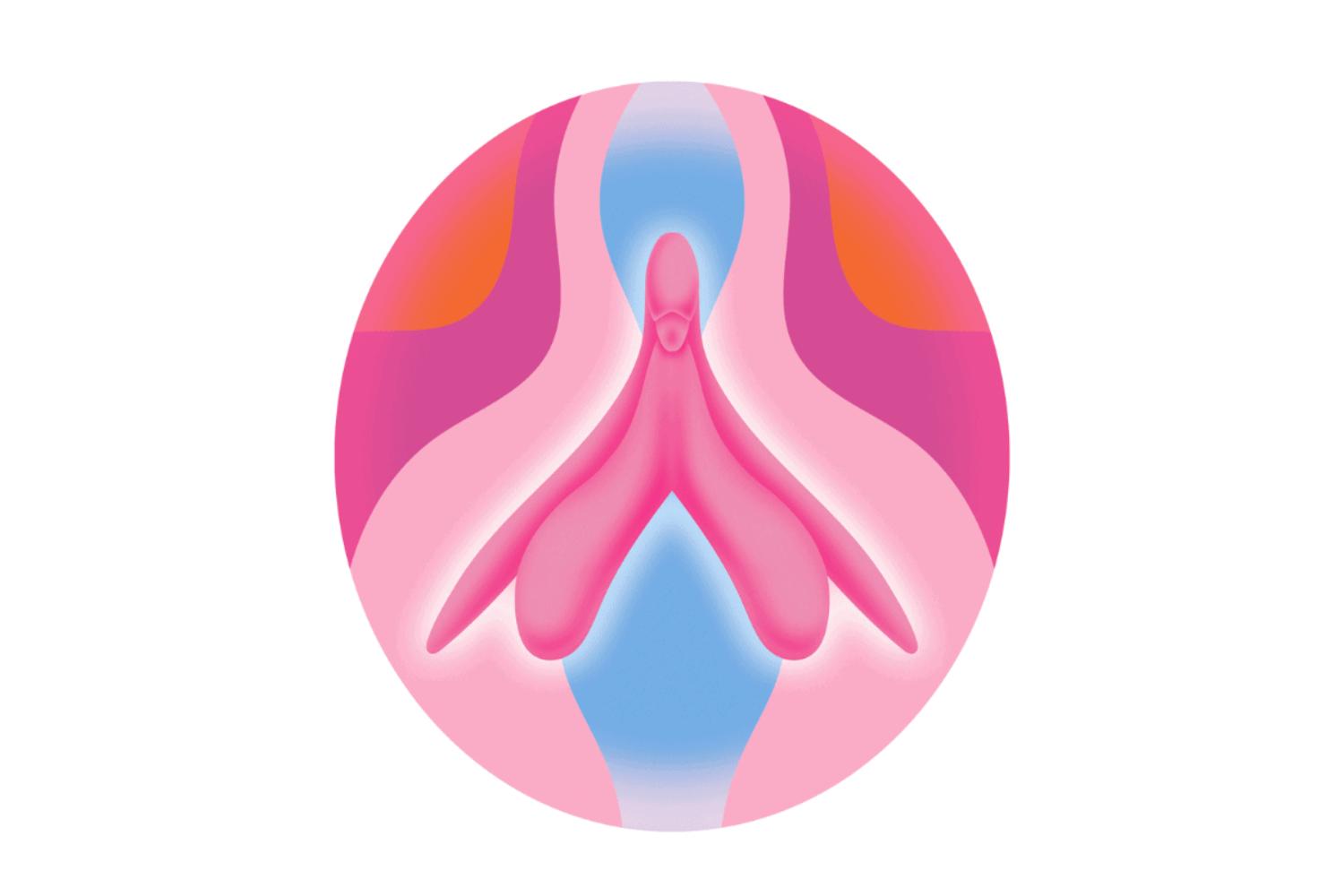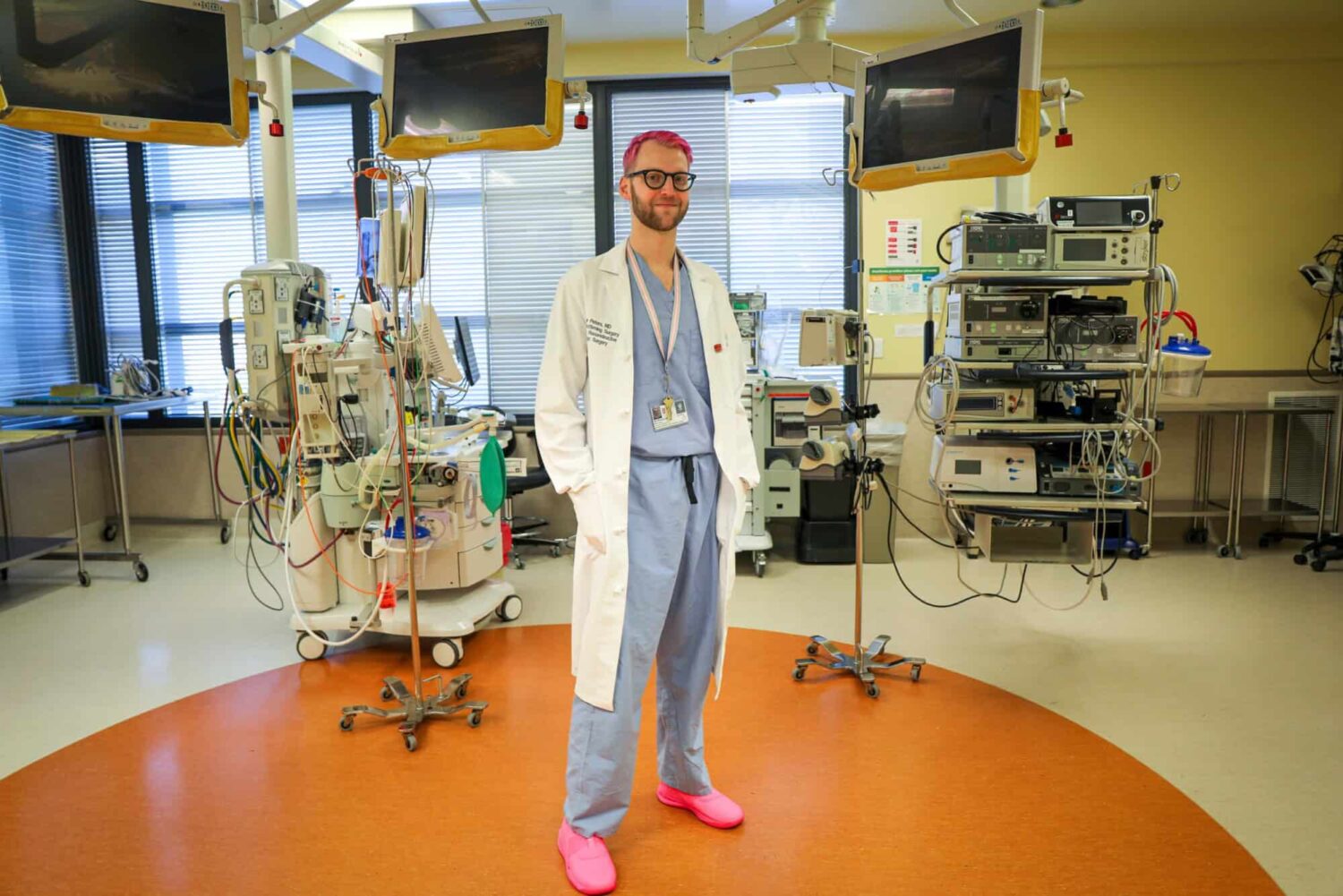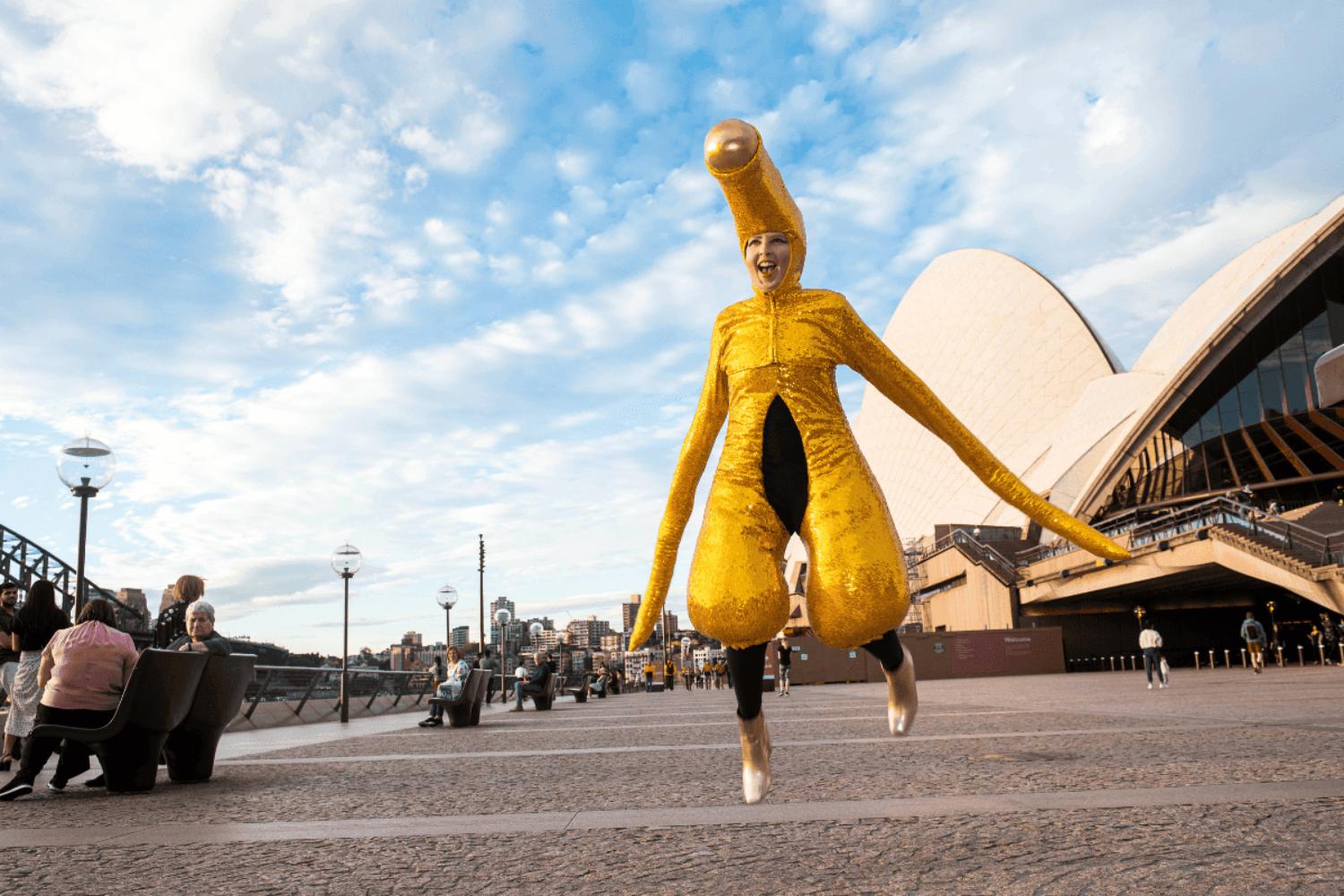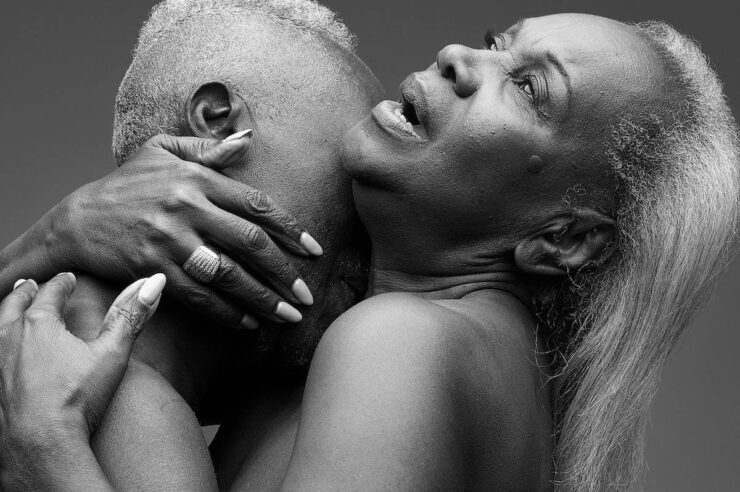For centuries, the clitoris has been ignored by medicine, shrouded in shame and secrecy. Until recently, our most up-to-date information on how many nerve endings it contains came from a 1976 study of cows. Now, thanks to the work of a few committed doctors and activists, it’s finally being brought out of the shadows
I was in my early 30s when I learned the difference between a vulva and a vagina. I was in my late 30s, while researching this piece, that I learned about the actual anatomy of a clitoris. I have given birth three times. I did biology. I am interested in health and bodies and medicine. And yet. When I took a proper look I was, shall we say, surprised.
I’m not alone. In a 2022 study by gynaecologists at the University of Manchester, England, less than 10 per cent of women could accurately label female genitalia. The clitoris is even more taboo than the vagina, and arguably the most neglected human organ by medicine. It is still inadequately depicted in most medical textbooks and barely touched upon in medical training. This is a serious problem: women have been injured by this lack of knowledge through botched reconstruction surgeries, anti-incontinence procedures, obstetric tears and repairs, and vulvectomies. But that may be starting to change.
First things first, let’s define our terms. Clitoris is from the Greek kleitoris, which means ‘little hill’, though it’s more like a mountain range than a hill, and way more extensive than most people realise – 90 per cent of the organ is internal. It looks a little like a wishbone with two bulbs attached. The external tip is the glans. This is what most people think of as the clitoris. The main nerve in the clitoris – like in the penis – is the dorsal nerve, which runs through the clitoral body and makes the organ particularly sensitive. There is also the clitoral hood, the clitoral bulbs and the crura – the longest, leg-like part that can extend, when erect, up to 9cm into the pelvis.
So it is much bigger and more complex than most people realise, which has implications not just in the bedroom and the classroom, but on the operating table. Now, a number of people from across different fields of expertise are leading the way in giving the clitoris the attention it deserves – through fighting misinformation, conducting cutting-edge scientific research and shifting cultural norms around sexual health. It means surgeons can spare crucial nerves during gender reassignments or clitoral reconstruction for women who have undergone FGM, enables us to improve anatomy textbooks and better understand the mechanisms behind female orgasm, and gives medicine a chance to finally give adequate care to half the world’s population.

We need a brief history of the clitoris to understand why exactly it has been so neglected by medicine, and why what’s happening now is so important.
The organ has had a rocky time. The names it has been called over the years give some sense of how it is a flint for emotions and ideas of female sexuality. ‘Devil’s teat’ (1486). ‘Shameful member’ (1545). ‘Seat of Venus’ (1559). ‘Doesn’t exist’ (1564). In 1844, the German anatomist Georg Ludwig Kobelt published the first illustrations of the clitoris, detailing the clitoral veins and nerves and the parts of the organ. Yes, 1844. A long time ago. Why did we go backwards?
In a word, taboo. In 1947 the clitoris was removed from the 25th edition of Gray’s Anatomy – the doctor’s Bible – by the editor. Already, the father of psychoanalysis Sigmund Freud had relegated the clitoris to the lunatic asylum of sexuality. Clitoral orgasms were “infantile” and evidence of mental illness, he wrote, whilst vaginal ones were “mature” and “healthy”.

Artist Alli Sebastian Wolf wears the Glitoris, an enormous golden, sequinned clitoris. Image: Alli Sebastian Wolf
Things began to change in the late 20th century with Australian urologist Helen O’Connell. Outraged by the absence of the clitoris in textbooks, she decided to tackle the problem. In 2005, she used magnetic resonance imaging (MRI) to create accurate images of the organ and confirmed the illustrations that Kobelt made. She was surprised by how large the nerves were – more than 2mm in width: not a thread, more like the wire in a coat hanger. She also published a paper which found that, contrary to popular belief, the ‘G-spot’ did not exist as a discrete anatomical construct and made it clear that the clitoris was the focus of orgasm for most women – and people should know where to find it.
It wasn’t until 2022, however, that the nerves in the clitoris were quantified. Previously, the oft-cited claim that it has 8,000 nerve endings came from a 1976 study of cows.
Blair Peters, self-styled as the Queer Surgeon, with he/they pronouns, is a gender-reforming surgeon with extensive training in nerve surgery. He performs phalloplasty, which is the creation of the penis for mostly trans-masculine individuals, but also for cis-gender people with trauma or conditions such as cancer. His passion is genital sensation and elevating the importance of sexual health.

Surgeon Blair Peters was the first person to count nerve fibers in the human clitoris. Image: OHSU News
When he first began working in the field of major genital reconstruction he was surprised doctors weren’t talking to people about sexual function.
“That motivated me to delve deeper into what we can do to improve these things,” he says. “One of the big unanswered questions was anatomy and the characteristics of the nerves in that area – crucial to inform techniques and improve outcomes.”
In phalloplasty, one of the main nerves that can be used to give the penis sensation is the dorsal nerve of the clitoris, so he had a unique opportunity to study it.
Surprise – the 8,000 figure was inaccurate. In a study published last October that created headlines around the world, Peters revealed that the number of nerves was in fact more than 10,281.
The implications of this work are significant for procedures such as phalloplasty or genital reconstruction where nerves need to be connected or co-opted. It is significant, too, in illuminating misinformation around this area, and just how much needs to be improved.

Misiformation and myths surround the clitoris, but slowly things are changing. Image: Alli Sebastian Wolf
“When I first got into this work the thing that would strike me was that people would do great from an aesthetic standpoint, but sensory outcomes were all over the map,” he says. “Some people would have some kind of sensation and not others. Years out from a surgical procedure it would often be a source of dissatisfaction or dysphoria, a real struggle for people.”
When we talked, he was at an annual nerve meeting in Miami, Florida. He was trying to pull peripheral nerve fields into the genital realm and emphasise that many people have sexual dysfunction from nerve issues that no field of medicine owns or is looking at. “There’s a lot of people out there suffering in silence.”
And why does he think the clitoris has been so neglected until now? “A lot of it comes down to suppression of sexuality for anyone who isn’t a straight man,” he says. “The way we view sex has been penile penetration only – and that doesn’t capture the sexual experience for so many of us.”
We are at the beginning of redressing the wrongs and misinformation around this neglected organ
For people who have problems after medical procedures, Peters says, there are really not many options out there, nor is there very much literature. We are at the “entry level” of taking those people seriously. He and his colleagues are trying to increase representation of groups whose voices haven’t historically been heard, such as trans people.
“The coolest thing about the research,” he says, “was the opportunity it gives for the needs of marginalised groups to be seen and heard.”
He hopes it will lead to more research funding, more people studying this area of medicine and ultimately a more patient-centred approach.
We’re really at this tipping point, he says. “I think there’s going to be an explosion [of research into the clitoris] over the next few years, but we also have a lot of time to make up for.”

Activist Jessica Pin is forcing publishers to update medical textbooks. Image: Anastasiia Sapon
Jessica Pin, self-styled as MediClit, is a clitoris activist with a huge online following. Her advocacy work is a result of her own experience of the devastating effects of medical neglect. She was harmed during surgery – her clitoral hood was cut and sensation lost during a labiaplasty – and she decided to campaign for better medical education in vulva anatomy. Through tenacious agitating over many years, she has single-handedly brought the clitoris out of the shadows and into the textbooks. So far she has got nine major medical textbooks changed, with more agreeing to be updated, two anatomy apps changed, and she has copublished a study on clitoral anatomy with her plastic surgeon father.
Her mission isn’t nearly finished though – she is working to get anatomy of the clitoris covered in the same depth as other organs (she found that there were 57 times as many words about the penis compared with the clitoris in medical textbooks). Pin also wants to establish anatomical basis for female sexual medicine and ensure all doctors considered qualified to operate on vulvas are taught clitoral anatomy.
This shouldn’t be too difficult – the knowledge has been there since 1844, as we have learned. But there are social and cultural barriers.
It’s a really big problem that people say the clitoris is just for pleasure
“The most fundamental problem isn’t a lack of research, it’s a lack of interest. It’s taboo, it’s wilful blindness, it’s believing that it’s not important,” Pin says. “To protect women like me no more research is needed. The research was sufficient 14 years ago. It was sufficient in 1844.”
She has come across ideological brick walls in her work. Medical professionals who say it is not important, for example.
“It’s a really big problem that people say the clitoris is just for pleasure because then what happens is that doctors say, ‘we’re not focused on pleasure we’re focused on reproduction’,” she says.

Artists are among those elevating the clitoris' status. Image: Artist Alli Sebastian Wolf
In 2019, the British scientist Roy Levin published a review study which argued that the clitoris has a key function in reproduction as well as pleasure. He analysed 15 studies published between 1966 and 2017 which showed that clitoral stimulation enhances blood flow, increases lubrication and ‘tenting’ – all of which has a positive effect on the activation of sperm.
There is a potential reproductive cost, then, to the harms committed by medical injuries. Pin argues that it’s also a matter of sexual agency – affecting major life choices and goals, such as relationships and reproduction – as well as sexual pleasure, which is often ignored by medicine. How can it improve now?
“The systems that professional medical organisations have in place to get doctors up to date should incorporate clitoral anatomy and require them to get up to date,” explains Pin.
All we need is accurate information about our bodies, even if it makes people blush
What can an average person do? “Anytime a woman is going to undergo any procedure, any drug, or anything medical in the pelvic area, ask your doctor, ‘How will this affect my sexual function?’” she says. “Every time you do that you make it clinically important, you assert, I care about this, and then they have to think about it.”
We are at the beginning of redressing the wrongs and misinformation around this neglected organ, championed by a few passionate individuals. Artists, also, are leading the way in celebrating the clitoris through street art and sculptures, such as The Glitoris, an enormous golden, sequinned model, designed by Sydney-based artist Alli Sebastian Wolf. Designers are celebrating the accurate anatomy through necklaces, lights, dresses, T-shirts, mugs, postcards and the Vagina Museum’s sell-out ‘cliterally adorable’ earrings.
The time for removing the blindfolds has come. Activists such as Jessica Pin and doctors such as Blair Peters and Helen O’Connell have made significant progress, and now it’s time for mainstream medicine and healthcare to catch up. It’s simple: all we need is accurate information about our bodies, even if it makes people blush.
Cliterally amazing: five things you didn’t know about the clitoris
- The clitoris has more than double the number of nerves in the penis
- All female mammals have clitorises. The largest belongs to the blue whale and can be up to three feet long
- Clitorises get erections. They are comprised of erectile tissue and become bigger, harder and engorged when aroused, just like the penis
- The clitoris continues growing through life. It could be two and a half times bigger in your 90s than it was in your teens
- The name for the flower Asian pigeonwings is Clitoria ternatea and it looks like a clitoris
Main image: Miléna Bucholz
Help us break the bad news bias
Positive News is helping more people than ever to get a balanced and uplifting view of the world. While the doom and gloom of other news outlets becomes overwhelming, instead we’re here to support your wellbeing and empower you to make a difference towards a better future. And as Positive News’ audience and impact grows, we’re showing the rest of the media that good news matters.
But our solutions journalism has a cost and, as an independent, not-for-profit media organisation, we rely on the financial backing of our readers. If you value what we do and can afford to, please consider making a one-off or regular contribution as a Positive News supporter. From as little as £1 per month, you’ll be directly funding the production and sharing of our stories – helping them to benefit many more people.
Join our community today, and together, we’ll change the news for good.






